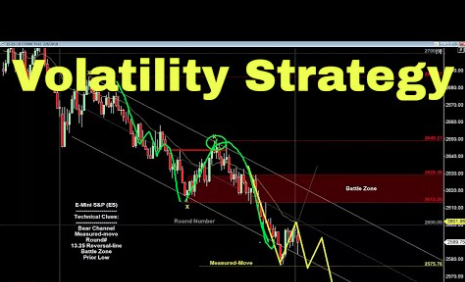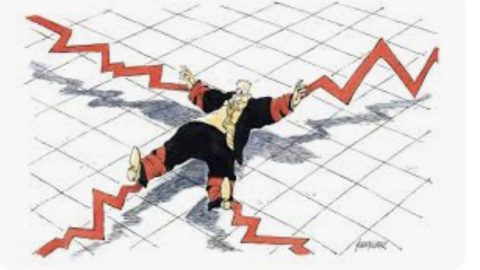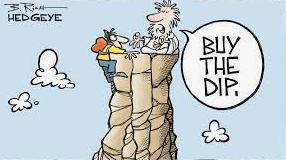Do you recall the evil of the market back in early February? You know, those evil folks that caused the market to crash known as the “short-Vol/VIX traders”. CNBC’s Mad Money Host Jim Cramer penned an article only a couple days after the February 5th Volpocolypse titled “Jim Cramer: There Are 4 Real Culprits for This Stock Market Nightmare”. In the article, Cramer declared the 1,000+ point declines in the Dow and 3-5% drops in the major averages as being caused, in part, by short-VOL traders.
“These instruments are the proximate cause of the madness you are now seeing. Consider them a nuclear blast zone and the fallout is raining on the S&P 500 causing radiation sickness that’s threatening to take the market down much further than it already has.”
Those are pretty damning words used by the infamous Mad Money host and founding operator of Thestreet.com. In a very miniscule and finite way, I’m sure the short-VIX crowd had something to do with the exacerbated 3 to 4-day market correction, but to the extent that Cramer layered and laid into VIX traders for the next month, it was highly unwarranted and illogically disconnected. (Now that’s layering)
“A group of complete morons” who traded little-known, leveraged products that bet on volatility is “blowing up” everything, Cramer said on “Squawk on the Street.”
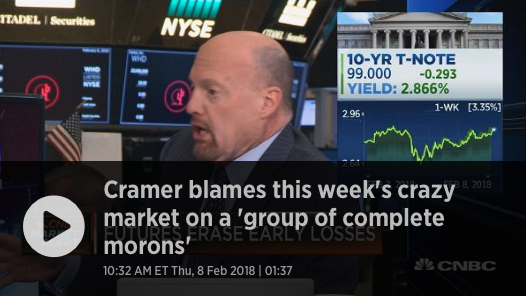
A group of complete morons huh? Me thinks Jim Cramer simply doesn’t know all there is to know about the VIX, the Volatility complex that includes many derivative structures or the correlations that make shorting volatility a virtual certainty. Understand that when I say “virtual certainty” I’m defining the verbiage by correlation or correlations. If you believe in the existence of the equity market, you believe in benign volatility in the equity market long-term. Markets simply can’t exist in a state of perpetually increasing volatility or a perpetually rising VIX. Investors would flee the market in droves, never to return, as the environment would seem too perilous to participate.
In 2018, we are seeing very scant market volume activity. This is largely due to the massive increase in volatility/VIX when compared to last year. April saw the lowest trading volumes of the year after the markets found their first correction in nearly 2 years. The average reading on the VIX last year was just above 11, but during February it rose to just above 50 at one point. Mind you, this would have been the most perfect time to short volatility, but for the sake of Cramer’s castigating of the morons… Through much of March and early April the VIX managed to level out around 19, which is the historic median reading of the VIX, give or take a few percent. My point in describing the 2018 increased levels of volatility is simply to validate the statement that investors would flee volatile markets and shorting volatility is a virtual certainty. So even as CNBC’s Mad Money hosts blubbers on about the short-VOL traders, to this day, CNBC itself published the following in mid-April:
“Why aren’t traders more enthusiastic about buying the market?
The prevailing thinking is that volume is down because there is more risk. Until recently, volatility has been very high. How to account for high volatility and relatively low volume? “Trump’s twitter handle can move the Dow 200-plus points in a matter of seconds,” Dennis Dick at Bright Trading told CNBC.
That means market makers have to widen their spreads in order to compensate for the increased risk. Wider spreads, Dick said, means less liquidity, which means higher volatility. That volatility will drop when there is less uncertainty.”
February seems such a distance away from where we are today does it not? If you need a reminder, simply take a look at the chart of the VIX below.
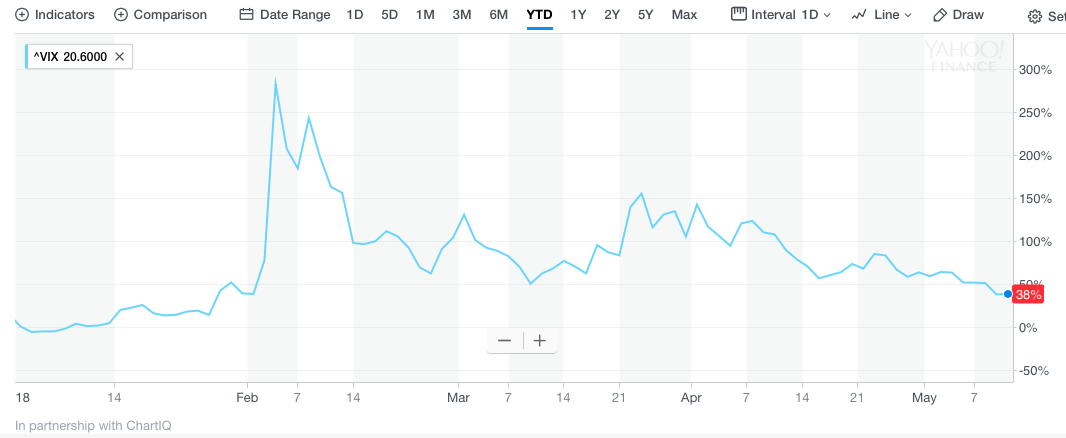
That massive spike occurred on February 5th and found many a short-VOL trader liquidated or liquidating their exposure to VIX-Exchange Traded Products with great losses. In earnest, I was experiencing a large account drawdown myself, as expected and experienced with past VIX spikes. Year-to-date, the VIX is still up a sharply, but well off it’s highs, as it should be and based on its correlated readings of the overall market with respect to the S&P 500 (SPX). The VIX is priced from a portfolio of S&P 500 (SPX) options defined by the CBOE, and the futures price from the market’s expectation (Implied Volatility) of where the VIX Index will settle at expiration. One component in the price of SPX options is an estimate of how volatile the S&P 500 will be between now and the option’s expiration date.
So let’s drill down here for a moment and get to the point! Short-VOL traders are not morons, but short-VOL trading should not be done on a whim or because it has become increasingly popular over the years. Novice participants in the short-VOL trade would be wise to participate with an expert trader of the Volatility complex and/or surround themselves with such experts/resources. They should understand the implications from trading volatility, those that are good, bad and downright ugly, as it was on February 5, 2018 and at various points throughout history. Most importantly, however, are the fundamental principles of the market and economic conditions that drive markets. Volatility can be said to be expressed by regime changes. Volatility moves from one regime to the next and the next and so on and so forth.
In 2017, I became increasingly worried that the short-VOL trade had become a trade marred by novice participation and general over exuberance. It was somewhat bothering me to the extent that it consumed me daily. Leading up to Thanksgiving I decided to put my thoughts and concerns onto paper/screen, typing away. On November 19,2017 my article titled Short Volatility Strategies And A Word Of Caution was published.
It is because of the rather immediate reward for shorting volatility in 2017 that a sense of complacency may be pervading those participating in the short-VOL trade. NO, that’s being a bit disingenuous! There is definitely complacency among short-VOL traders as I come across it daily. And no, I don’t dismiss myself out of like complacency in participation. It’s natural given the trend. But…but it’s easy to say that and it’s easy to find concern for complacency regardless of where it may be found right? When we speak of complacency it tends to carry a negative connotation. Nonetheless, and as I wax poetically, I’m concerned by what I encounter as I foresee a time where such complacency may be met with…well greater volatility for which greater expertise and even timing may be necessary to extrapolate profits from the volatility trade. Timing will be of even greater need for those who participate with instruments like VelocityShares Daily Inverse VIX Short-Term ETN (XIV) or ProShares Short VIX Short-Term Futures ETF (SVXY). These instruments are not double-leveraged and fail to achieve the same benefits that other 2X VIX-ETPs benefit from like a greater degree of options decay, contango and beta friction. SVXY and XIV can be marred during and after a VIX spike by beta slippage.
The warning depicted above and the pinpointing/targeting of XIV and SVXY were not found with favor last year, as I received a great many hateful emails and “other communications”. In hindsight though and now that many have seen what CAN actually occur in the Volatility complex… nuff said. Everyone who is or desires to participate in the Volatility complex should read that article, penned last year, in my opinion. Did I know that XIV would be terminated and did I know that SVXY would lose 85% of its value in a single day? Again, volatility can be expressed in terms of regime changes and knowing the composition of the market and economy can enable investors to understand the probability of when a regime change is at-hand, hence the issued warning. I’m no genius, but a play one in real life 😉 (Watch for the caveat!)
That brings us to Thursday, May 10, 2018. While the VIX is up 22% or so YTD, it is down significantly from its 2018 peak and has been declining over the last couple of months to where it rests at the open of the trading day. The recent decline in the VIX has put it on track for its lowest close in more than three months. It fell for a fifth straight session yesterday, and settled at its lowest level since Jan. 26th. Moreover, it has tumbled more than 38% over the past month. How does the VIX decline compare to the major equity averages you might ask? The Dow Jones Industrial Average is up 2.4% over the past month, while the S&P 500 is up 3.2% and the Nasdaq Composite Index is up 5.6 percent. So basically if you had shorted volatility a month ago and held that short exposure over the last month, who would have performed better; the equity index investor or the short-VOL trader? Morons huh?
Shorting volatility is about exposure, liquidity, corporate earnings and macroeconomics just to name a few aspects and, of course, in my opinion. These variables are constantly changing, but always moving in one direction long-term that expresses itself in the moves of the major indexes. Don’t get me wrong, dips occur, but long-term… As long as these variables are constantly being considered and expounded upon for greater insights into their value when juxtaposed to trading volatility, a trader can outperform the broader equity market by leaps and bounds. It’s a tall task/order, don’t get me wrong, but that is why resources are warranted or necessary – also in my opinion. Lastly but certainly not least, trading volatility is about duration as most derivatives in the trading complex are constructed in some way based on duration.
One of the reasons I’ve been so successful at trading volatility over the years is due to my dedication to educating myself on all things market-correlated, building resources, sticktowitidness and… well who doesn’t need a little luck. Most traders restrict their long-term potential with shortsighted trading approaches that deliver immediate profits, or else. Not where you want to find yourself as a trader. In fact, I don’t know many traders that have a long shelf life in trading the markets with such an expectation. Those who set a plan in place and manage that plan against the ever-changing market environment generally build profitable disciplines for long-term trading/investing profits. But what do I know? I’m just a complete moron… who is beating the benchmark return YTD…again! (I can play stupid if you want me too, if it makes you feel better…the caveat!)
Subscribers of finomgroup.com have the opportunity to receive my weekly research reports and daily/weekly trade alerts. Our YTD, trade alert success rate is over 90 percent, averaging 4 trade alerts weekly. We deliver such trade alerts in real time via finomgroup.com’s private twitter feed. Subscribe today and benefit for our trade alerts.
Tags: SPX VIX SPY DJIA IWM QQQ SVXY TVIX UVXY VXX
